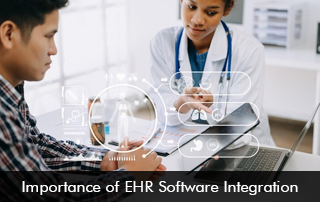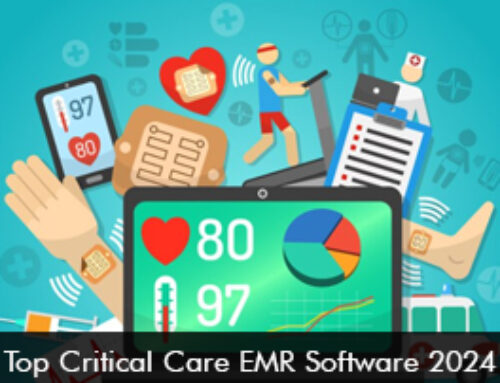Electronic Medical Records (EMR) Software integration is vital to ensure smooth clinical workflows and enable healthcare providers to deliver high-quality patient care. Successful EHR Software integration paves the foundation for health systems to make use of data effectively to improve health outcomes, manage patient flow, and offer unsurpassed services.
What is EMR Software Integration?
The process of linking or combining different software systems or apps with an electronic medical records system is referred to as EHR software integration. This connection allows for the exchange, sharing, and use of patient health information and data across various healthcare platforms, applications, and devices.
Interoperability between Different Systems via Software Integration
By facilitating seamless data sharing and communication between various systems, EMR software integration seeks to improve and expedite healthcare operations. It makes it possible for electronic health records systems to communicate with other healthcare software, including:
- Practice Management Software System – Manage patient scheduling, billing tasks, and all administrative processes in a health system.
- Laboratory Systems – The seamless integration with laboratory systems enables the exchange of test results and other diagnostic data to be made available in the EMR Software.
- PACS – Direct access to radiology images, including MRIs, CT scans, and X-rays, is made possible through integration with PACS (Picture Archiving and Communication Systems) within the EHR Software.
- Health Information Exchange – Software integration with HIE networks that builds an interoperable environment that is necessary to support care coordination between different healthcare providers. The easy and secure exchange of patient data keeps care teams well informed about a patient’s health conditions to support the care decision.
Importance of Integration with Other Systems
Healthcare providers can obtain comprehensive patient data in a single, centralized location by integrating EMR software with the different systems mentioned above. This can greatly improve patient care, decision-making, and overall delivery efficiency.
Improved Data Security with EMR Software Integration
Integrating EHR software can greatly improve data security in healthcare systems by standardizing and centralizing patient information access. It guarantees that sensitive medical data is transferred and maintained by industry rules like HIPAA (Health Insurance Portability and Accountability Act) through strong integration protocols and secure data exchange systems.
Electronic Health Records Integration lowers the danger of unwanted access or data breaches by enabling the adoption of strict authentication procedures, encryption mechanisms, and access controls. The total integrity and confidentiality of patient health information are strengthened by the implementation of uniform security measures by healthcare providers thanks to centralized EMR systems, which simplify data management.
EHR Software Integration Challenges
EMR Software integration holds immense value in healthcare, however, certain roadblocks come in the way. By knowing these challenges health IT vendors can reduce them to ensure smooth integration between systems.
Compatibility
The most common challenge in software integration includes compatibility with existing systems used by health systems. However, many EMR Software vendors ensure integration with existing software systems, for example, Tebra Software integrates seamlessly with third-party products, meaning any practice can leverage their solutions.
Data Migration
Data migration is a complex process. The migration of data can take up to weeks and in worst cases the data can be lost. Data migration requires robust data practices to ensure the process is a hit and not a miss.
High Costs
EMR Software integration costs can be high, which can reduce the likelihood of practices going for it. That being said, the many benefits of software integration greatly outweigh the costs associated with integration.







